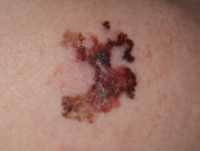AstraZeneca, Author Interviews, Pulmonary Disease / 22.08.2020
Triple-Drug Inhaler vs Dual Therapy for COPD
MedicalResearch.com Interview with:
Frank Trudo, MD MBA
Vice President, US Medical Affairs
Respiratory & Immunology
AstraZeneca
MedicalResearch.com: What is the background for this study?
Response: ETHOS was a randomized, double-blinded, multi-center, parallel-group, 52-week trial to assess the efficacy and safety of PT010 in symptomatic patients with moderate to very severe COPD and a history of exacerbation(s) in the previous year. A subset of patients participated in the 4-hour pulmonary function test (PFT) sub-study, with the following primary endpoints: change from baseline in morning pre-dose trough FEV1 at Week 24 at (both doses of budesonide/glycopyrrolate/formoterol fumarate MDI versus glycopyrrolate/formoterol fumarate MDI), and FEV1 area under the curve from 0-4 hours at Week 24 (both doses of budesonide/glycopyrrolate/formoterol fumarate MDI vs budesonide/formoterol fumarate MDI). (more…)






























